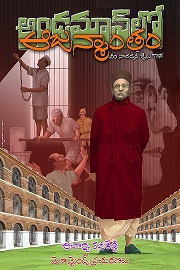What is a Yagna? Yagnas are performed through the recitation of sound to reach a certain result. Yagnas are based on the ancient knowled...
What is a Yagna?
Yagnas are performed through the recitation of sound to reach a certain result. Yagnas are based on the ancient knowledge of saints of the vedic tradition. Yagnas are performed to creative a positive effect and to best support nature positively. Specifically trained pandits (pundits) perform the Yagnas . The goal of Yagnas is to promote harmony in order for a person or group of people to see the positive effects of life.
Yagnas and poojas, there is some scientific basis to it. These rituals had some basis as a way of creating a conducive atmosphere for people. When people did not have their own ways to create an inner situation, others who knew how to create a conducive atmosphere made certain Yagnas during the Vedic times.
Yagna Meaning:
Literally, Yagna meaning boils down to “sacrifice, offering, worship, and devotion.” In Hinduism, it’s any ritual performed before a sacred fire. Before offering any article or substance into the havan kund, one needs to take care of a few things. One can charge the pit with a mantra which is made into the ground or made of metal for the purpose of making offerings to the god of fire. Thus, just via naming it, one can guide towards a particular deity. Our oblations consequently receive through the forces of nature.
The Essentials Of Preparing A Fire Worship
The significance of Yagna lies in how well you perform it. Before one sits down to start a fire worship, there are some essentials to it. Likewise, Mantras and the havan kund were and are two important constituents of fire worship in olden days. When one prepares havan kunds it takes place after due deliberations, and with great care. The size and shape of a havan kund also differ from person to person. The shape and size of bricks for the prep in the havan kund were in accordance.
Using Ancient Geometry And Vedic Mathematics
The vital statistics of the person who would perform the yagna was the decision, after employing the principles of Vedic mathematics and geometry. As per the maxims of ancient geometry, there were ten different shapes and sizes of havan bricks. The maxims of ancient geometry go with the name Sublabha Sutra which is very old and dates back to the eighth century BC.
In 1975, a yagna was on display which was based purely on the ancient tradition of Kerala. And for this one thousand bricks were a part of the construction at the havan kund. Reports came flying in that the yagna was able to produce the desired result (Week, August 1975). This is another significance of Yagna.
Use Of Articles For The Fire – Significance of Yagna
The significance of Yagna also lies in the articles that you use for the fire. Pieces of wood, ghee, herbs, grains and other articles were useful for offering in the fire. And efforts were made to ensure they were chosen very carefully. All the items from the selection group are not only eco-friendly but also air purifiers. Yes, you heard that right! And once these substances reduce to ashes. Later, they turn into a potent medicine and one can distribute to the devotees as bhasma prasadam. Further, one applies this bhasma prasadam on the forehead, and one consumes a pinch of the holy ash.
The wood of only such trees and plants is in use which does not emit poisonous gases. And the resultant ash is agreeable to human beings when consumed or applied on the person. Only ghee made from cow milk, specifically herbs, dry fruits and some other articles is as a part of the offering into the fire while conducting a yagna.
Most Favourite Items For A Deity
Besides these, there are certain favourite items that are dearest to a particular deity. Hence those articles and items are also a part of the offering which is then put into the fire. for example, pieces of sugarcane are always put in the havan for Lord Ganesha. Whereas, kheer, i.e, a milk and rice pudding always a put in the havan for Lord Vishnu. Linseeds are offered in the havan held for ancestors. This is another significance of Yagna.
These articles are then put into the fire. But this happens only after reciting the name of a particular deity or an ancestor. These substances than just turn into gases and ash because of the fire. Since astral bodies have a very keen sense of smell, they accept our offerings in the form of fragrance and odour.
Rules And Restrictions For Priest As Well As The Performer
The significance of Yagna also lies in how well you follow the rules and restrictions. These rules and regulations are common for both the priest conducting the yagna and the person performing it. Remember that both have to abide with the following code of conduct:
- Maintain celibacy
- Avoid getting angry easily. So don’t react, only respond.
- Speak less and what is the need of the hour
- Sleep on the floor without any fancy mattress.
- Control the intake of food, and so on.
You may remain in a question mark as to why should one follow this, isn’t it? The science behind such a code is that it makes a man physically receptive and sensitive to divine blessings and to conserve energy.
Connecting The Dots With Holi – Significance of Yagna
Another significance of Yagna is connecting the dots with Holi. In ancient days, the festival of Holi was a collective yagna and the entire community became a part of the celebration. The entire village would come together on the full moon night of the Hindu month of Phalguna. Holi is an indication that marks the end of winter and the advent of summer.
Similarly, the intention of the Holi Yagna was to purify the atmosphere. People believe that the fumes of cow dung fire protect people against harmful radiations. Also, according to certain scholars, it was a special day for fire-worshippers. That was the time when only cow dung cakes were a part of the making of fire, dry fruits, tender grains of wheat and green grams.
Present Time Vs Previous Years
The significance of Yagna has changed in comparison to the past along with how we perform it today. The yagna fire wasn’t ignited the same way as it occurs today. In those times, a matchstick wasn’t available. Then mantras were helpful and a useful component to ignite the yagna. And the bonfire was lit exactly when the moon attains its full glory of Purnima. The astrologers were the ones to calculate the precise moment using Vedic mathematics. Isn’t that amazing?
All in all, the present character of this festival has radically taken a U-turn. And what we see today is a form which is nothing but in distortion. In the olden days, one would extract curd, cow dung and colours from vegetables and flowers to play Holi. Unlike today, there are only chemical colours in the market. Little do people realize about the side effects and the consequences it could have on mankind.










No comments